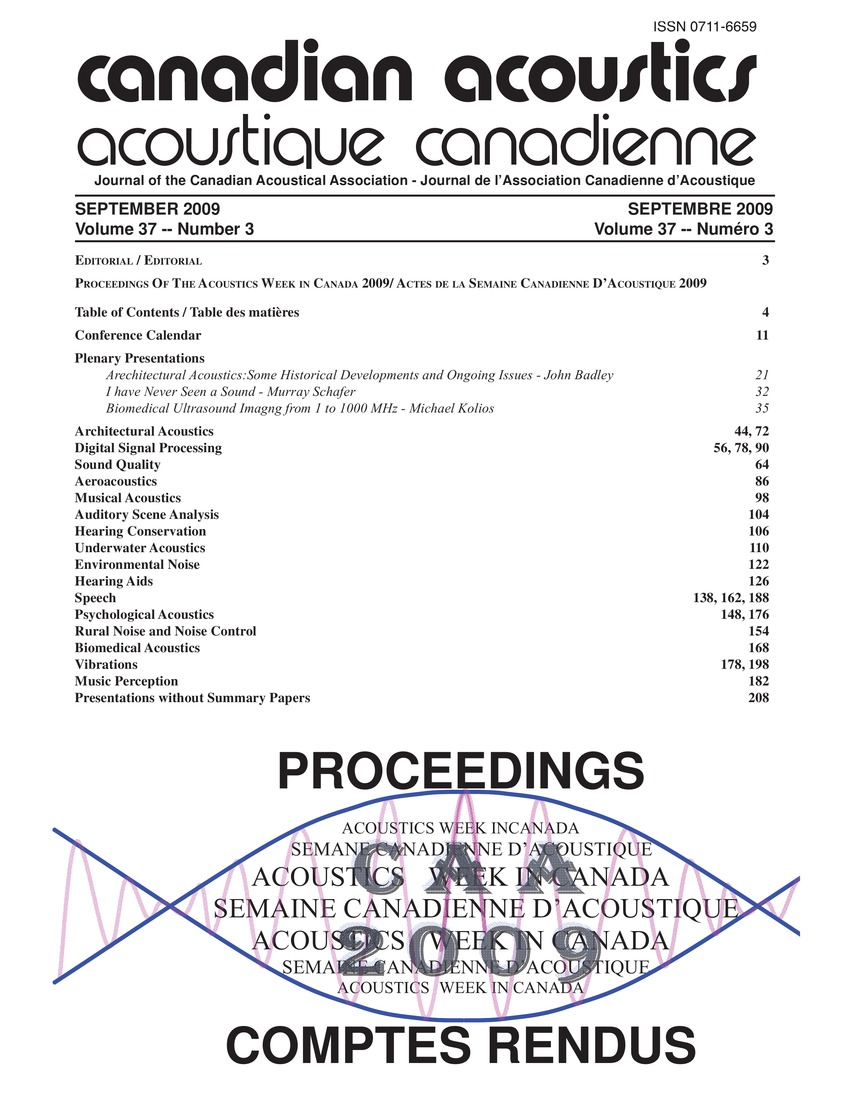Subband adaptive filtering for acoustic feedback compensation in hearing aids
Keywords:
Acoustics, Adaptive algorithms, Adaptive filtering, Adaptive filters, Audition, Electric filters, Hearing aids, Probes, Acoustic feedback, Adaptive filter coefficients, Feedback compensation, Feedback paths, Hearing aid, Normalized least mean square, Probe signals, Sub-bands, Subband adaptive filter, Subband adaptive filtering, Subband signalsAbstract
The use of subband adaptive filtering for acoustic feedback compensation in hearing aids are discussed. The outputs of the filters are replicas of the subband-decomposed probe signal that are subtracted from the true feedback probe signal measured at the microphone of the hearing aid. The resulting error is used in the normalized least-mean square (NLMS) algorithm to adjust the adaptive filter coefficients to the true feedback path. Subband adaptive filters are preferred over other filters, as they offer more flexibility in dealing with disturbing speech. The performance of feedback compensation on these subband signals allows the system to achieve better tracking of changing feedback paths and offers additional flexibility in dealing with performance-stability challenges.Additional Files
Published
How to Cite
Issue
Section
License
Author Licensing Addendum
This Licensing Addendum ("Addendum") is entered into between the undersigned Author(s) and Canadian Acoustics journal published by the Canadian Acoustical Association (hereinafter referred to as the "Publisher"). The Author(s) and the Publisher agree as follows:
-
Retained Rights: The Author(s) retain(s) the following rights:
- The right to reproduce, distribute, and publicly display the Work on the Author's personal website or the website of the Author's institution.
- The right to use the Work in the Author's teaching activities and presentations.
- The right to include the Work in a compilation for the Author's personal use, not for sale.
-
Grant of License: The Author(s) grant(s) to the Publisher a worldwide exclusive license to publish, reproduce, distribute, and display the Work in Canadian Acoustics and any other formats and media deemed appropriate by the Publisher.
-
Attribution: The Publisher agrees to include proper attribution to the Author(s) in all publications and reproductions of the Work.
-
No Conflict: This Addendum is intended to be in harmony with, and not in conflict with, the terms and conditions of the original agreement entered into between the Author(s) and the Publisher.
-
Copyright Clause: Copyright on articles is held by the Author(s). The corresponding Author has the right to grant on behalf of all Authors and does grant on behalf of all Authors, a worldwide exclusive license to the Publisher and its licensees in perpetuity, in all forms, formats, and media (whether known now or created in the future), including but not limited to the rights to publish, reproduce, distribute, display, store, translate, create adaptations, reprints, include within collections, and create summaries, extracts, and/or abstracts of the Contribution.


